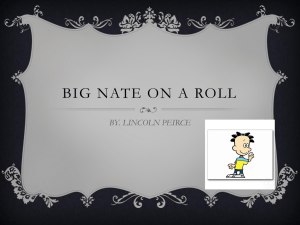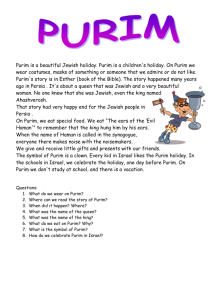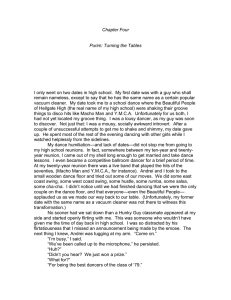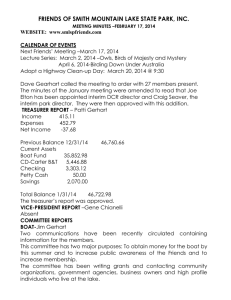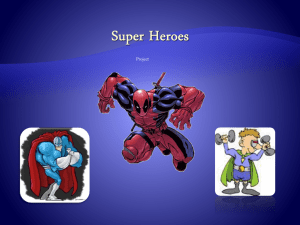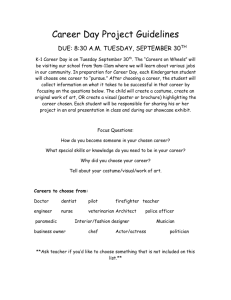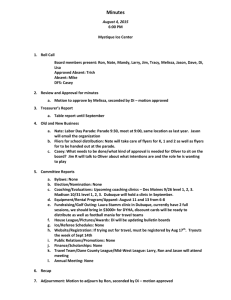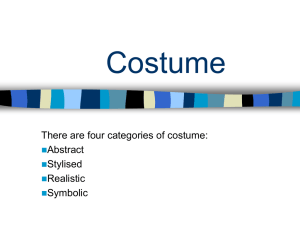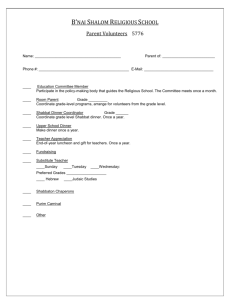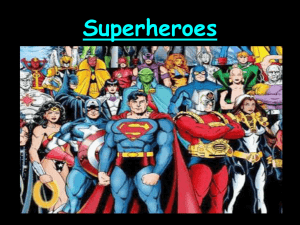eSource Resources for Teachers and Students © KAR
advertisement
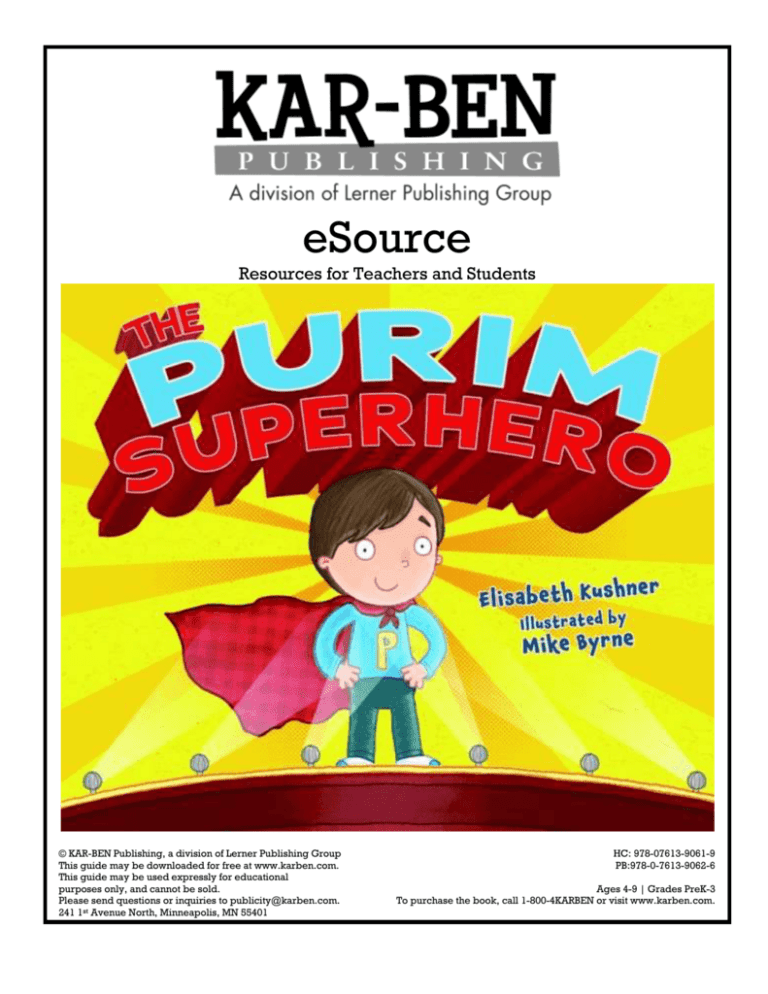
eSource Resources for Teachers and Students © KAR-BEN Publishing, a division of Lerner Publishing Group This guide may be downloaded for free at www.karben.com. This guide may be used expressly for educational purposes only, and cannot be sold. Please send questions or inquiries to publicity@karben.com. 241 1st Avenue North, Minneapolis, MN 55401 HC: 978-07613-9061-9 PB:978-0-7613-9062-6 Ages 4-9 | Grades PreK-3 To purchase the book, call 1-800-4KARBEN or visit www.karben.com. How to Use This Guide Many young Jewish children have some knowledge of Purim as a holiday; some children may even be familiar with the elements of the Purim story. The Purim Superhero is a story that offers readers two new ways for understanding the Purim story—a story with a contemporary hero with a personal dilemma who is easily relatable and as a way to understand that the revealing of one’s true identity can be powerful. The guide offers tools to prepare young students to understand the story and ideas for further processing what they have learned. Additionally, the book can be used with upper grades as supplemental material. Older students can benefit from thinking critically about the way issues about difference and conformity are presented and juxtaposed with the Purim story. Older students can read actively and deeply, making inferences and interpretations based on the text and visuals (and their interplay) in a picture book. About the Book About the Author Elisabeth Kushner lives in Vancouver, Canada, with her family and a jumble of books and musical instruments. If she were a superhero, she’d be Orange Ukelele Girl. Her favorite kind of hamentaschen is poppyseed. About the Illustrator Mike Byrne grew up near Liverpool in the United Kingdom, moving to London to work as an illustrator by day and a crayon-wielding crime fighter by night. He lives in the English countryside with his wife and two cats, where he spends his days doodling and creating children’s books. Summary and Context In The Purim Superhero, Nate loves everything about aliens. He loves to draw aliens, he loves to read about aliens, and loves to think about aliens. So when it comes time to choose a costume for Purim, Nate naturally knew what he was going to be; that is until his friends at Hebrew school told him that all the boys would be dressing up as superheroes. Worried about being different from his classmates, Nate seeks advice from his two dads, who suggest that being different can sometimes be a good thing, and—rather than using as an example their own family as perhaps the reader would expect—point Nate to the lesson of Purim which celebrates Queen Esther, a girl with the courage to speak up for who she really was–a Jewish girl!–and ends up saving her people. The book’s action takes place during the Jewish holiday Purim. A holiday that comes in early spring, Purim recalls how brave Queen Esther saved the Jewish people of Persia from wicked Haman’s evil plot to destroy them, with the support and wisdom of her Uncle Mordecai. The story is recounted in the Biblical book of Esther. Families celebrate by wearing costumes, eating three-cornered cookies called hamentaschen, listening to the reading of the Megillah (a scroll containing the story) and making noise with groggers, blotting out the name of the villain Haman. Questions: For before reading: 1. 2. 3. 4. 5. What is the Purim story? Who is Esther? Who is King Ahashuerus? What qualities does a superhero have? Is there a difference between heroes and superheroes? How do you decide what costume to wear at Purim? Who is your favorite superhero? Why? How are you and your friends similar? In what ways are you different? For reading together: 1. When Nate asks Max if all the boys are going to be superheroes, what does he mean? What can we infer from his question? 2. At dinner, why is Nate still undecided about his Purim costume? 3. What does Nate’s dad mean when he asks “Is Max your boss?” 4. In the Purim story, how did Esther save the Jewish people when they were in danger? 5. What does Nate think to himself about being different? Do you agree? 6. What qualities does Nate’s Daddy explain that heroes have? 7. What does Nate’s costume look like? 8. What award does Nate win? 9. What does Ethan say about his Purim costume? Why, do you think? For post-reading discussion: 1. Why do you think that—at first—Nate decides to wear a superhero costume? What influences his decision? 2. What are some ways that Max feels different than his friends? 3. Why do you think Nate likes aliens? How are aliens different than people? 4. How does showing who you really are make you stronger? 5. The story of Purim and the story of The Purim Superhero are both, in part, about families. There are many kinds of families. Who are the people in Nate’s family? Who are the people in Queen Esther’s family? How does Nate’s family help him decide what to do? How does Esther’s family? Suggested activities: My Hero: Interview someone you believe is a hero. Before your interview, create five different questions that you can ask. Your questions should ask about what they do, how they find courage to do it, and what they want people to know about what they do. Purim Costume Mashup: In The Purim Superhero, Max combines two things—superheroes and aliens—to make his very unique costume, Super Alien. Combine two things that you like and invent a costume, and then draw what your costume would look like. Would you be a Pirate Baker? A Skateboarder Artist? A Veterinarian Ballerina? Alien Sketch: Max loved imagining what aliens and outer space might be like. Use your imagination and draw what you think an alien might look like. How is the alien similar to you? How is it different than you? Then, compare your drawing to others’ drawings, and see what similarities and differences there are between them. Paper Plate Awards: In the story, Rabbi Joanie presents awards for costumes to each Hebrew school student. Make your own awards using paper plates. Decorate the paper plates with markers and stickers, and create clever and meaningful awards like Tells The Funniest Jokes, Rides Bike the Farthest, Biggest Stuffed Animal Collection, Loves Animals, and so on. This could be a class project, where students select a couple names and create awards for those students. Or, create paper plate awards as a family. Don’t forget your awards ceremony! A Cold Wind Blows: This movement game can be used to teach the concept of sameness and difference. Like musical chairs, this game is about finding a spot (in a standing circle or in a circle of chairs) and avoiding being the last one remaining in the circle. Players form a circle, standing next to one another. One player goes inside the circle and announces “A cold wind blows for….” and fills in the blanks with some quality or state of being that he or she shares (“kids who go to school,” “people who like to read,” “people whose favorite color is blue”). All players who share this commonality must vacate their spot and move to a different one, including the player who made the announcement. The last player to remain in the circle (i.e. the player who could not find a vacant spot) will make the next “A cold wind blows” announcement, and the game will proceed this way again and again. There is no “winner” per se, but the game allows players to see what commonalities and with whom. A Family Portrait: Draw a picture of your family. You can include just your immediate family or other family members who are close to you. After students draw their pictures, discuss how families are the same and how they are different and the different decisions students made on whom to include in their drawings (for example, do students draw nuclear or extended families, family pets, etc.).
